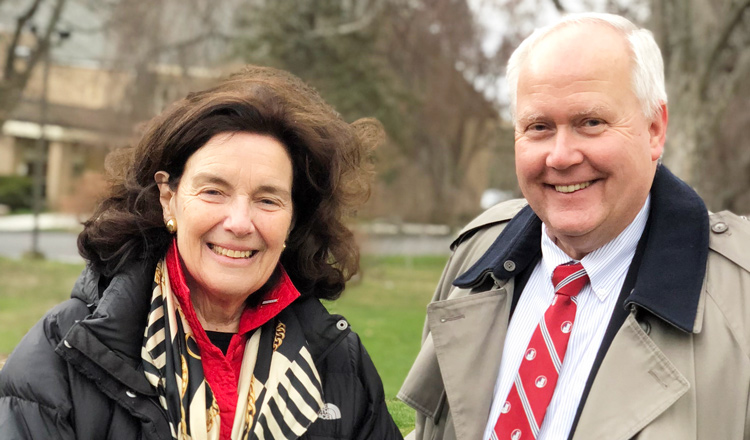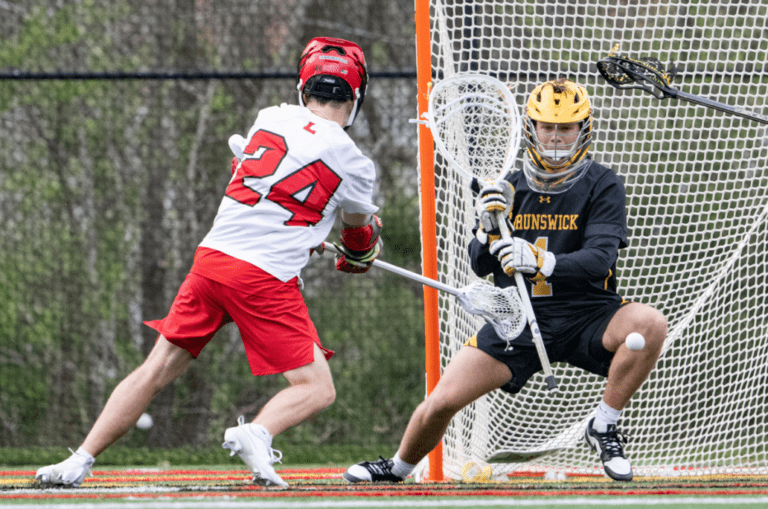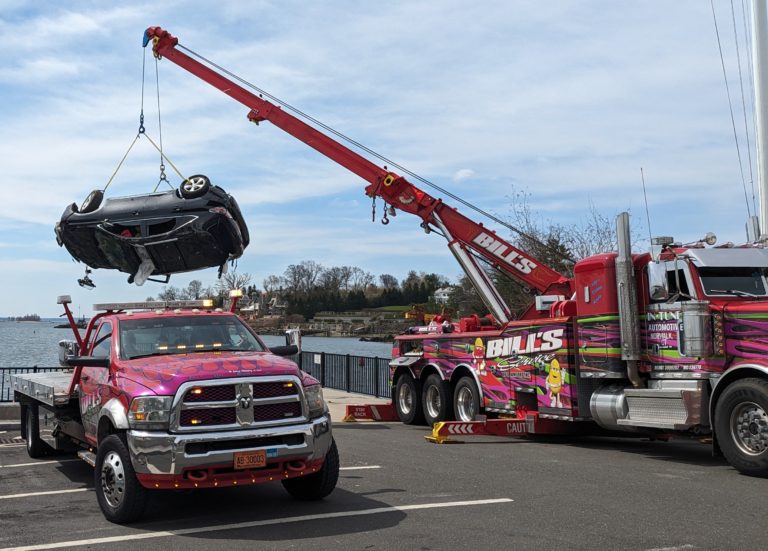

By Anne W. Semmes
Sentinel Correspondent
Two forces for inclusion came together recently to address what has become a national conversation, or rather a debate, over the role of monuments in our society: Greenwich’s ambassadress for women’s rights inherited from her great great grandmother suffragist Elizabeth Cady Stanton, and Manhattanville College’s fairly new President, Dr. Michael Geisler.
As keynote speaker at the College’s April 17 multi-media event “Designing Memory,” Jenkins spoke to “Public Spaces: Women Take Their Places.” Her latest triumph is her role in bringing the first “real” women statuary to Central Park, of suffragists Elizabeth Cady Stanton and Susan B. Anthony.
President Geisler had a long and successful career as vice president at Middlebury College, but he was especially drawn to his new post at Manhattanville by the diverse student body of this small liberal arts college, where nearly 2,800 students come from as many as 48 countries and 37 states. Greenwich is only a stone’s throw from the Purchase, N.Y., campus.
How We Externalize Memory
Geisler, who grew up in post-World War II Germany, is fascinated by what he sees as a “deep identity crisis” in America with the ongoing debates about statues and monuments. “We are trying to renegotiate our past,” he said, just as Germany had to renegotiate after the war, with such questions as, “What happens to the German flag, the German national anthem, and the capital – it was moved from Bonn to Berlin.”
Hence, the event that just took place at Manhattanville, “Designing Memory,” that explored, with the help of his students and faculty, the variety of ways, in Geisler’s words, “we externalize memory, trying to preserve what we feel is our identity in monuments, flags, paintings, and writings.”
Jenkins was privy to the event’s tour of the campus, where the story was told with performances and discussion of the College’s own experience of sudden removal years ago of religious statuary that was testament to the Sacred Heart Order that had founded the College. “It was phenomenal,” said Jenkins. “The students were going around acting like statues that freeze, then we go into a very special Lady Chapel where students interpret that monument, and I cried and got goosebumps. Maya Lin, who designed the Vietnam Memorial, redesigned the Chapel with a glass roof where you look up and see the sky.”
Jenkins Engages Students
Jenkins engaged also with the College’s history, drama, and music professors, and “the good news” was that both students and faculty had signed on to play a part in the historic unveiling ceremony of the first female statuary in Central Park, scheduled in August of 2020, the 100th anniversary of the 19th Amendment that gave women the right to vote.
“I had asked different performers and the event coordinators if they were interested in performing in Central Park,” said Jenkins. “A hundred percent of everybody said yes! All the Manhattanville students will enter the park from its different gates and go towards the heart of the park where our statue site is. They will be like pied pipers that draw everybody to the statue for the unveiling ceremony. Isn’t this fun?”
In Jenkins’ keynote speech she shared an earlier experience in which she played a part with a removed statue from the rotunda in the nation’s capital. “When women got the vote in 1920, this beautiful statue was created in Carrara, Italy, by Adelaide Johnson of the three suffragists, Elizabeth Cady Stanton, Susan B. Anthony and Lucretia Mott.” But by Jenkins’ childhood the statue had been removed to the rotunda’s crypt, “the land of the dead.” Jenkins said, “Even George Washington wasn’t buried there, though he was meant to be.” Jenkins would fight to have the statue returned to the rotunda, “the living room of democracy for the United States.” She pointed out, “It took two Acts of Congress because the rotunda is jointly owned by the House and the Senate.” She has learned in retrospect that, “Putting a female statue in Central Park is not as difficult legislatively as moving a statue one floor up.”
Central Park Statuary Update
Off-stage Jenkins, gave an update on the status of the Central Park Elizabeth Cady Stanton and Susan B. Anthony Statue Fund campaign. Out of 91 sculptors who submitted proposals for the combined statuary, four semi-finalists were chosen. “They are busy working on an 18-inch artist model,” she said, with their deadline being “the next important women’s history event, Seneca Falls Convention Day, in July. We always tie all of our campaign events to something significant with women’s suffrage.” The finalist is to be announced on the August date of the passing of the 19th Amendment, giving the sculptor two years to do the work before it is inaugurated on the 100th anniversary, in 2020.
Citing that important date, Jenkins spoke of the fundraising campaign, having received numerous checks totaling $20.20. To the million dollars raised thus far of $1.5 million needed, has come an offer of $150,000 from Johnnie Walker Scotch Whiskey, with news of their new Jane Walker label honoring a female Walker instrumental in the company’s development. “Many women are tasters,” learned Jenkins.
Following Jenkins’ talk in the College’s historic Reid Castle was a Q&A and discussion led by a panel, including Tashae Smith, a 2017 graduate. Smith shared how she had brought to light the black history of her hometown of Newburgh, NY, with a self-led historic walking tour. She learned on the ground how empowering statues and signage could be. Panelist Heather Krannich, president of student government for the Class of 2018, was asked how she would have handled the removal of religious statues from her college campus. Expressing surprise over that “overnight removal,” she said such a removal was “a decision that should be made by the entire community.”
In an interview before Jenkins’ keynote talk, Geisler shared his hope that such a discussion – “that should have taken place in 2005” – would address that religious statue removal which happened over a decade before his arrival. “The administration at that time felt that we had been a non-sectarian college for about four decades. So, arriving students who were not Catholic, felt that Catholic too loudly. And that is a debatable discussion.” But he added, “The statues are still there – they were just moved from a fairly dominant position to one at the south end of campus. Nothing was destroyed.”
Geisler Sees Campus Role in Community
Geisler described the “Designing Memory” event as “coming out of the present debate over monuments. We are an academic institution, and one of the principal purposes of an academic institution is beyond just educating young minds. It’s to serve as a place for discussion, a catalyst for discussion for the community.” He would like his college “to not simply be a place for students, but the surrounding communities, for that’s how a university or college becomes truly an educational institution for everyone.”“There are certain things that SUNY Purchase does, that we do, that various institutions do in the area, but I would like to see all of us do more to play a role not just for the students we educate but for the community in which we are located. That means that the students will be exposed to interested citizens from the surrounding communities who also have something to say about these issues, and in many cases bring a significant amount of lifetime experience, and in some cases actual expertise on these topics to the conversation,” Geisler said.
Activist Coline Jenkins is convinced. She said she’s ready to enroll! “Manhattanville College is amazing – that they have taken up ideas of memory and monuments over history, time, and tied it to their college. It’s a phenomenal invitation to learn and to dialogue.”




